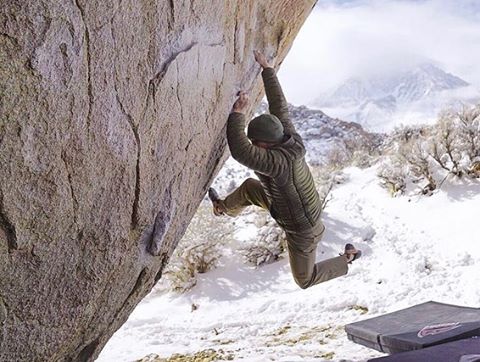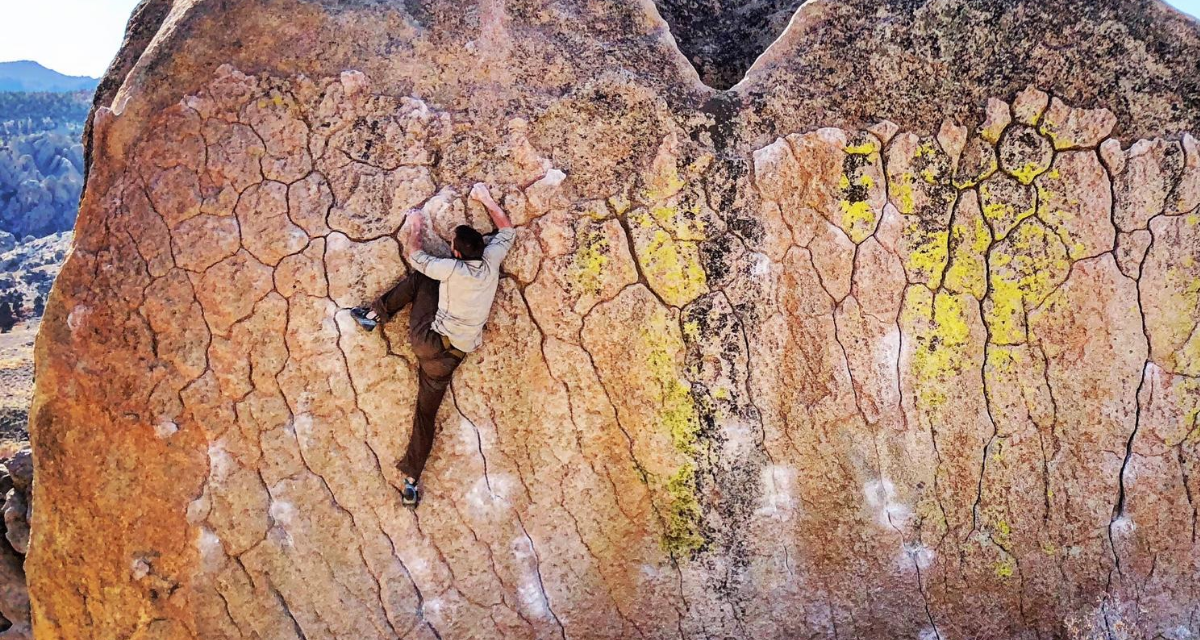I try to avoid using the word “endurance” altogether when talking about climbing, whether it be with a friend or a client. The word has a reputation that precedes it, a stigma even, that requires time and effort to counteract. As a coach, the last thing I want to do is waste time correcting semantic issues. I’d much rather focus on getting you fit and sending than explaining why your understanding of a word is flawed. To that end, I like to replace the word “endurance” with the word “capacity”. It’s not only more accurate from a sports-science perspective; fewer people are going to hear the word and immediately assume they know what you’re talking about, which is a win-win.
2 kinds of capacities: Aerobic and Anaerobic
I believe whole-heartedly in keeping things as simple as possible without sacrificing honesty or effectiveness. I generally don’t have my clients do any training of things like anaerobic power, single-finger strength, sloper strength, etc. because I think they are incredibly goal-specific components of fitness that can easily be advanced to a satisfactory level simply as a function of engaging in more general training. For example, single-finger strength will be improved automatically by training all-finger strength. Sloper strength will be improved by improving open-hand strength. In the spirit of keeping things as simple as possible, I talk about two kinds of capacity with my clients: aerobic and anaerobic.
Aerobic capacity is your body’s (specifically the heart and lungs) ability to provide oxygen–to be used as energy–to your muscles. Anaerobic Capacity is the combined available energy provided by ATP-PC, both stored and produced on the go by anaerobic metabolic processes. But I said simple, right? Let’s go simpler: aerobic capacity relies on oxygen, fuels light efforts, and promotes recovery between harder efforts; anaerobic capacity does not rely on oxygen, fuels harder efforts, and has implications for recovery as well.
The anaerobic system is a fairly complicated one. The development of the anaerobic system is crucial to achieving elite performance. The anaerobic system is broken down into lactic and alactic, and further yet into power and capacity for each of those. We’re not going to worry about the alactic system at all right now, opting instead to focus solely on the capacity of the anaerobic lactic system, which shall henceforth be referred to as “anaerobic capacity”. Keeping it simple, right?
Relevant Post: The Best Rock Climbing Training Infographic Ever
The two contexts in which I want to talk about the capacities are single-pitch sport climbing and bouldering. I think you’re going to find the biggest difference in approach to training these systems between those disciplines of climbing.
You’re never using only one energy system while climbing, you’re just skewing the ratio of aerobic/anaerobic work depending on the intensity of the climbing.
Bouldering tends to be primarily anaerobic, while sport climbing tends to be primarily aerobic. Before you start calling out exceptions, remember that’s a vague generalization for illustrative purposes. So… let’s look a little deeper at how those climbing disciplines utilize the anaerobic and aerobic energy systems.
Bouldering

Coach Chris Fornieri using his anaerobic capacity to pull his way through Go Granny (V5) in the Buttermilks. Photo by Kevin Goodman.
Anaerobic Capacity: Often dubbed “power endurance”, this energy system presents itself as the ability to maintain high-intensity efforts for 20-60 seconds. Savvy readers will note the timeframe is suspiciously similar to the amount of time it typically takes to complete a boulder problem. While it may not technically be erroneous to call it “power endurance”, that nomenclature simply isn’t very accurate, just as “endurance” is a poor descriptor for “anaerobic capacity”. Not wrong, just not specific enough. You know that feeling when you’re halfway up a boulder problem and suddenly you feel like you just can’t make your body do the next move? Assuming you’re not confused by or afraid of the move itself, you’re probably experiencing failure of your anaerobic capacity: your ability to continue pulling hard moves. Perhaps an even more relevant indicator to a boulderer of an underdeveloped anaerobic energy system is the feeling of “being done” after very little climbing. You’re not tired, you’re not bored, you’re just… done. You’re out of go juice and you’re not going to be able to keep climbing at the same intensity.
Aerobic Capacity: Devout boulderers tend to scoff at the notion that they rely on this energy system. What they fail to realize is that the aerobic system fuels their recovery between bouts of anaerobic effort (boulder problems!), so having a fairly robust aerobic energy system will cause a boulderer to recover more completely, more quickly between problems. In turn, that will allow for a boulderer to do more bouldering!
Sport Climbing Capacities
Aerobic Capacity: The aerobic system keeps you coasting on easier climbs, staving off the pump that would naturally accompany the same quantity of harder climbing. If 5 minutes of sustained 5.12 climbing gets you pumped, then it stands to reason that 5 minutes of 5.9 climbing probably doesn’t. If you’re not getting pumped, you’re relying mostly on your aerobic energy system. Having a solid aerobic energy system in place is key for arriving at cruxes fresh enough to get through them and to recover after them. Think about that 5.12 that’s basically 60 feet of 5.10 jug-hauling up to a V5 crux sequence guarding the chains. How much harder is that crux sequence if you’re pumped on arrival instead of fresh as a daisy?
Anaerobic Capacity: Speaking of cruxes, the anaerobic energy system is the workhorse that keeps you plowing through those relentless sections of hard climbing. You know those sections where you wouldn’t dare stop because you’d just pump out? Your anaerobic capacity is either what helps you push through or halts your advance. The hallmark of failure of the anaerobic capacity system is a feeling of “powering out”, rather than “pump”. If you’re powering out, you’re not losing your grip just yet, but it feels like you just can’t pull anymore. Naturally, this tends to lead to that arm-shattering pump that makes you lose your grip. It’s important to understand that powering out and getting pumped is not the same thing and that they imply the failure of different energy systems. Powering out often leads to pumping out, but they are not the same thing.
Related Post: Determining Your Training and Skill Needs
Final thoughts on capacities
I’m not going to get into the nitty-gritty of how to train the capacities in this article. My hope is that you have a better understanding of what exactly “capacity” means and how the capacities affect your climbing. Consider this a primer for further capacity training content. I intend to write more about energy systems in the future, as well as provide specific workouts to target them.
Want more climbing content? Get our awesome climbing newsletter, delivered weekly.
Explore More
Related articles you'll love- The Best Rock Climbing Infographic Ever
- Rock Climbing Training – The Principles of Programming
- Moja Gear’s Home Training Gear Buyer’s Guide
- How to Build Your First Trad Rack
- Best Shoes for Bouldering, Sport, and Trad Climbing








